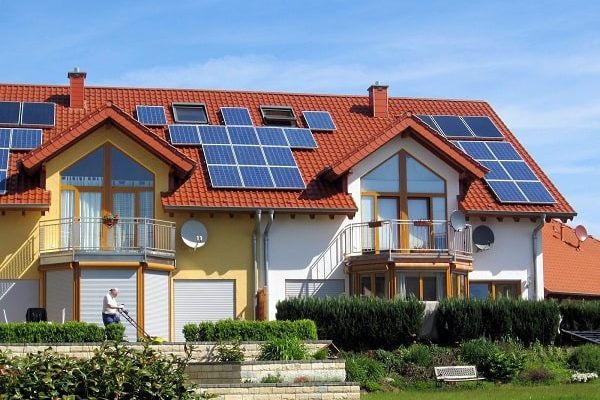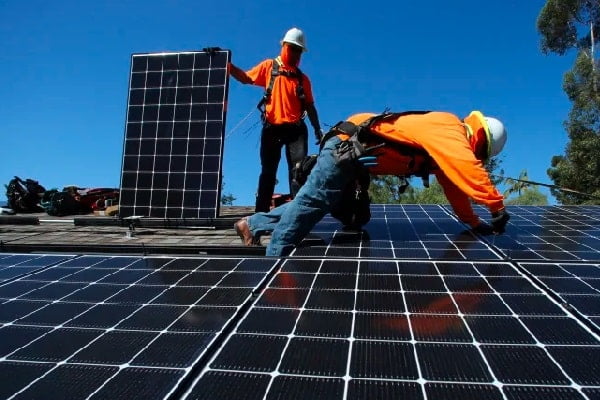Make the switch to renewable energy today and get the power you need to manage your home and run your business. Malaysia Solar Power offers an impressive range of solar panel units in Malaysia for residential and commercial use. Save on utilities and improve your way of living with the right solar system in Malaysia.
A
- Absorber – Any unit that has the capacity to absorb all the light wavelengths hitting the Earth’s surface from the sun. The light wavelengths are then converted into energy.
- AC (Alternating Current) – an electrical current type where the direction of the current changes repeatedly
- Ampere (Amp) – the SI unit of electric current or the rate of the flow of electrons
B
- Base Load – the average amount of electric power supplied by any utility in a specific period of time
- Battery Capacity – expressed in ampere-hours, it’s the amount of total electrical charge that a battery can deliver under specific conditions
- Battery Cell – a unit that has at least one positive and one negative plate plus a divider which is the opposite of polarity between them
- Battery Energy Capacity – The total energy that can be extracted from a battery unit is regarded as its energy capacity. The capacity varies with temperature, age, rate, and cutoff voltage
- Battery Cycle Life – The number of cycles a battery completes before a cell or battery fails to meet its efficiency performance criteria
- Battery Life – Usually measured in cycles, battery life is the period during which a battery or cell keeps operating
- Balance of System – the components (apart from solar panels) that are part of a solar system comprises the balance of the system. The components include all costs relating to preparing the site, designing and installing plus maintaining the system
C
- Cadmium – the chemical used to make certain types of batteries and solar cells
- Cadmium Telluride – a polycrystalline thin-film photovoltaic material
- Cell – the smallest, basic component of all solar modules that when exposed to light produces electricity
- Cloud enhancement – the light that is reflected and escalates the solar impact from nearby clouds
- Converter – a unit or a facility that converts one direct current to another
- Cycle – the progressive round of discharging and consequent charging of a battery
D
- DC – Direct Current is a one-way flow of electric current. It’s a form of energy that is ultimately created from your solar panels
- Discharge – Usually expressed as a percentage of maximum capacity, discharge is the capacity of the battery that gets distracted
- Downtime – normally expressed in hours per year or percentage, downtime refers to the time when the photovoltaic system can’t provide power for the load
E
- Energy Audit – With an aim to find ways of using less energy, an assessment is done to show the present energy consumed in a home
- Energy Payback –
- Equalization – a mechanism that is established to bring all battery cells systematically to an equal state-of-charge
F
- Feed-in Tariff – an economic policy designed to pay you for the energy you will feed back to the grid. It is designed to encourage investment in renewable energy technologies
Fill Factor – the ratio of a PV cell’s actual power compared with its maximum voltage or current. This is used when determining a cell’s performance
Fixed Tilt Array – An array of solar panels arranged at an angle according to the horizontal
G
- GW – A unit of power that equal 1 billion Watts. It stands for Gigawatt
- Gel Battery – a lead-acid battery that contains a mixture of hydrogen and sulphuric acid in the form of a gel
- Green Power – Any power that is produced from sources of renewable energy like sun, wind, etc.
H
- Hybrid Solar System – a system that combines the functionality of both solar panels and grid connection refers to a hybrid system. Such an energy storage system has the capability to provide power even when there’s a blackout
- Hot Spot Effect –an area in a PV module that has a higher temperature in comparison to the surroundings. The effect occurs when in a series of cells, one or more cells generate less current because of cell damage, interconnection failure, or partial shading. The bypass diodes in the solar system prevent these “hot spots” from forming
- Incident Light – the amount of light reaching or shining onto the face of a module or solar cell
- Inverter – A component device in the solar power system that converts electricity from DC to AC
- Islanding – with an aim to avoid grid power failure, multiple inverters are connected to the grid so they interact together to ensure power maintenance
J
- Joule – a unit of work or energy, 1 joule per second equals 1 watt
- Junction – Between each of the semiconductor layers, there is an area of transition such as a p/n junction
- Junction Box – an enclosure or a protected covering on the module where the PV strings are electrically connected
K
- Kilowatt – a standard unit of electrical power that equals 1000 watts
Kilowatt Hours (kWh) – 1000 watts energizing across an hour
L
- Lead Acid Battery– a type of battery in which the plates are made of lead calcium. The plates are submerged in pure lead or an acid electrolyte
- Load Current– the current an electrical device requires to be powered
- Load – the total amount of electrical power being consumed over a period of time
M
- Maintenance Free Battery – To maintain electrolyte level, such a battery is sealed so water is prevented from being added
- Module – commonly called a “solar panel, a module is a self-contained and environmentally protected physical structure containing several interconnected PV cells
- MW – stands for Megawatt
N
- Net Metering – a billing mechanism in which the government credits solar energy system owners when they feed excess generated electricity into the grid
- Nickel Cadmium Battery – a type of battery that contains an alkaline electrolyte, nickel, and cadmium
O
- Orientation – The position at which you install a solar panel with reference to north, south, east and west directions
P
- PPA (Power Purchase Agreement) – a financial arrangement where you purchase the energy back from the solar installation company that would install solar panels – domestic or commercial – for free to sell you back the generated power
- PV (Photovoltaic) – literally electricity from light (Photo = sunlight; Volt = electrical potential). It’s the process of creating energy by collecting direct sunlight
- PV Array – cluster of solar panels on a roof or a structure
Q
- Qualification Testing– a method through which maximum capacity of PV modules is tested in terms of electrical and mechanical, and thermal stress
- Quartz Sand– raw material that goes into making metallurgic silicon
R
- Renewable Energy Certificates – a tax credit that is available to businesses and homes that have installed qualified sources of renewable energy like solar or wind power system
- Renewable Energy Target– Financial incentives geared towards investment in renewable energy sources through selling RECs
- Reserve Capacity – the total amount of capacity generated by the central power system that needs to be maintained to meet peak loads
- Roof Slope – the roof’s precise angle where the roof has a horizontal surface with a slope between 20 and 50 degree to perform the best for a solar power system
S
- Solar Energy – energy collected from sun’s heat and light by using new technologies such as artificial photosynthesis or solar heating Solar Cell- also called PV cell, it’s an electrical unit that converts sun’s energy into electricity by the photovoltaic effect
- Solar System – a system comprising of several devices (solar panels, inverters, cables and various mounts) working together to convert sun’s energy into electricity
- Solar Panel – the unit designed to harness the sunlight as a source of alternate energy
- Strings – to create the required operating voltage, there are the total number of panels that are electrically connected called strings
- Subsystem – refers to the number of components that combine to form a solar power system
T
- Tilt Angle – solar module’s angle of inclination normally measured from the horizontal
- Tracker – a device designed to tilt an array of solar panels toward the sun to yield maximum energy
- Textured Solar Cell – a cell that’s surface has been restructured either mechanically or chemically
- Triple Solar Cell – a stacked solar cell covering three different solar spectrum ranges
U
- Utility-interactive inverter – a type of an inverter that only works when successfully connected to the utility grid. It should have an output frequency in sync with the utility power
V
- VAC – refers to Volts Alternating Current
- VDC – stands for Volts Direct Current
- Vented Cell – a battery with a vent mechanism designed to discharge any gases created during the charging process
W
- Watt – a unit of electricity consumed by an appliance
- Watt Peak – Under any standard and regulated test condition the maximum power output measured for a solar power system or photovoltaic device
- Wet Shelf Life – a time period for which a charged battery filled with electrolyte can remain unused prior to going below the particular performance level
Z
- Zenith Angle – the angle between a line perpendicular to the horizontal plane at the earth’s surface and the center of the sun
Ready to make the change today?
Make the call the today and schedule a FREE CONSULTATION with our solar technology experts. Call us onPhone# or complete our GET A QUOTE form to request for an obligation-free estimate.



